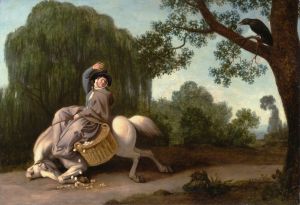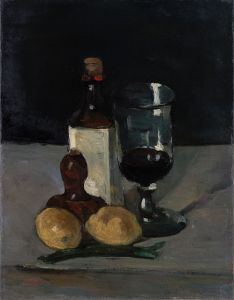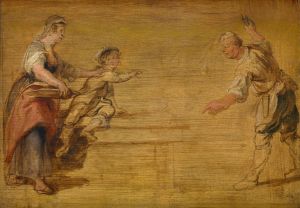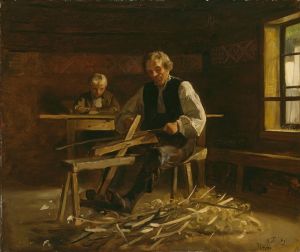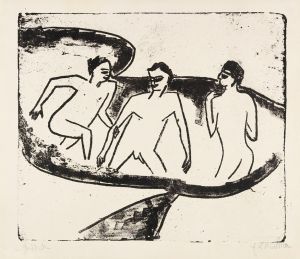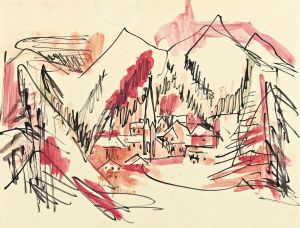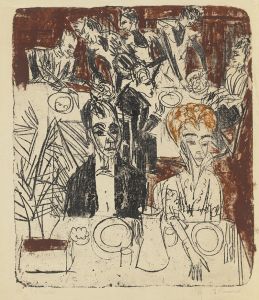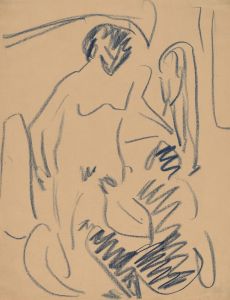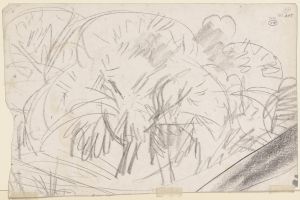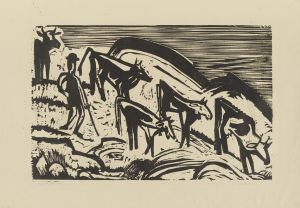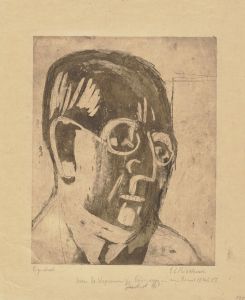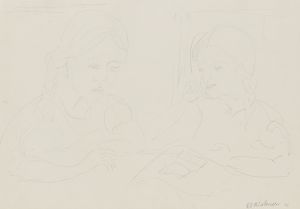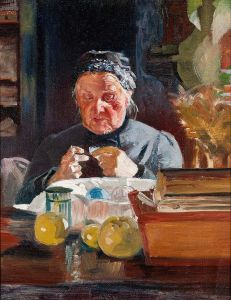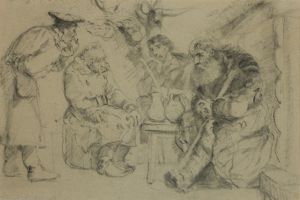
Bäuerin mit Knaben am Tisch
A hand-painted replica of Ernst Ludwig Kirchner’s masterpiece Bäuerin mit Knaben am Tisch, meticulously crafted by professional artists to capture the true essence of the original. Each piece is created with museum-quality canvas and rare mineral pigments, carefully painted by experienced artists with delicate brushstrokes and rich, layered colors to perfectly recreate the texture of the original artwork. Unlike machine-printed reproductions, this hand-painted version brings the painting to life, infused with the artist’s emotions and skill in every stroke. Whether for personal collection or home decoration, it instantly elevates the artistic atmosphere of any space.
Ernst Ludwig Kirchner was a prominent German expressionist painter and one of the founding members of the influential art group Die Brücke (The Bridge), which played a crucial role in the development of modern art in the early 20th century. Kirchner's work is characterized by its bold use of color, dynamic compositions, and a focus on the human figure, often exploring themes of modernity and the human condition.
"Bäuerin mit Knaben am Tisch" (Peasant Woman with Boy at the Table) is one of Kirchner's works that exemplifies his expressionist style. Although specific details about this particular painting are not widely documented, it can be understood within the broader context of Kirchner's oeuvre and the expressionist movement.
Kirchner's art often depicted scenes of everyday life, capturing the essence of his subjects with emotional intensity and vivid colors. His work was heavily influenced by the rapid changes in society during the early 20th century, including urbanization and the alienation that often accompanied modern life. In his paintings, Kirchner sought to convey the psychological and emotional experiences of his subjects, often using distorted forms and exaggerated colors to express these themes.
"Bäuerin mit Knaben am Tisch" likely portrays a domestic scene, a common subject in Kirchner's work. The title suggests a focus on rural life, with a peasant woman and a boy depicted in an intimate setting. Kirchner's interest in such themes may have been influenced by his desire to explore the contrasts between urban and rural life, a recurring motif in his work.
The expressionist movement, to which Kirchner was a central figure, aimed to break away from traditional artistic conventions and sought to express the inner emotional experience rather than the external reality. This was achieved through bold colors, dynamic compositions, and a focus on the subjective interpretation of the world. Kirchner's work, including "Bäuerin mit Knaben am Tisch," embodies these principles, offering viewers a glimpse into the emotional and psychological depth of his subjects.
Kirchner's career was marked by both critical acclaim and personal struggles. He faced significant challenges during his lifetime, including the impact of World War I, which left him with lasting psychological scars. Despite these difficulties, Kirchner continued to produce art that was both innovative and deeply personal.
Today, Kirchner is celebrated as one of the leading figures of German expressionism, and his work continues to be studied and admired for its contribution to modern art. "Bäuerin mit Knaben am Tisch," like many of his paintings, reflects his unique artistic vision and his ability to capture the complexities of human emotion and experience through his distinctive style.
In summary, while specific details about "Bäuerin mit Knaben am Tisch" are limited, it can be appreciated as part of Kirchner's broader body of work, which remains influential in the history of modern art. His expressionist approach and focus on the human condition continue to resonate with audiences, making his work a significant part of the artistic canon.





